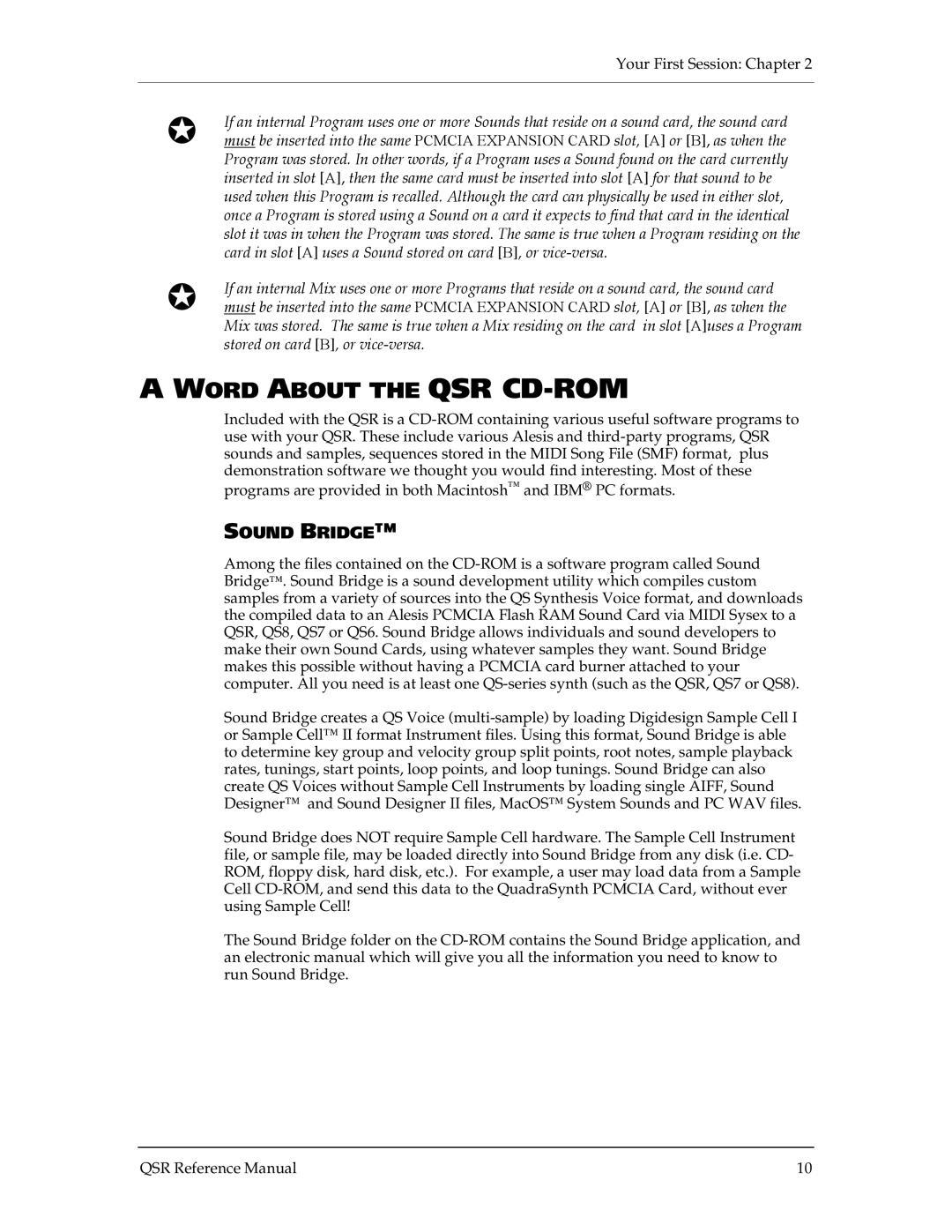Your First Session: Chapter 2
✪If an internal Program uses one or more Sounds that reside on a sound card, the sound card must be inserted into the same PCMCIA EXPANSION CARD slot, [A] or [B], as when the Program was stored. In other words, if a Program uses a Sound found on the card currently inserted in slot [A], then the same card must be inserted into slot [A] for that sound to be used when this Program is recalled. Although the card can physically be used in either slot, once a Program is stored using a Sound on a card it expects to find that card in the identical slot it was in when the Program was stored. The same is true when a Program residing on the card in slot [A] uses a Sound stored on card [B], or vice-versa.
✪If an internal Mix uses one or more Programs that reside on a sound card, the sound card must be inserted into the same PCMCIA EXPANSION CARD slot, [A] or [B], as when the Mix was stored. The same is true when a Mix residing on the card in slot [A]uses a Program stored on card [B], or vice-versa.
A WORD ABOUT THE QSR CD-ROM
Included with the QSR is a CD-ROM containing various useful software programs to use with your QSR. These include various Alesis and third-party programs, QSR sounds and samples, sequences stored in the MIDI Song File (SMF) format, plus demonstration software we thought you would find interesting. Most of these programs are provided in both Macintosh™ and IBM® PC formats.
SOUND BRIDGE™
Among the files contained on the CD-ROM is a software program called Sound Bridge™. Sound Bridge is a sound development utility which compiles custom samples from a variety of sources into the QS Synthesis Voice format, and downloads the compiled data to an Alesis PCMCIA Flash RAM Sound Card via MIDI Sysex to a QSR, QS8, QS7 or QS6. Sound Bridge allows individuals and sound developers to make their own Sound Cards, using whatever samples they want. Sound Bridge makes this possible without having a PCMCIA card burner attached to your computer. All you need is at least one QS-series synth (such as the QSR, QS7 or QS8).
Sound Bridge creates a QS Voice (multi-sample) by loading Digidesign Sample Cell I or Sample Cell™ II format Instrument files. Using this format, Sound Bridge is able to determine key group and velocity group split points, root notes, sample playback rates, tunings, start points, loop points, and loop tunings. Sound Bridge can also create QS Voices without Sample Cell Instruments by loading single AIFF, Sound Designer™ and Sound Designer II files, MacOS™ System Sounds and PC WAV files.
Sound Bridge does NOT require Sample Cell hardware. The Sample Cell Instrument file, or sample file, may be loaded directly into Sound Bridge from any disk (i.e. CD- ROM, floppy disk, hard disk, etc.). For example, a user may load data from a Sample Cell CD-ROM, and send this data to the QuadraSynth PCMCIA Card, without ever using Sample Cell!
The Sound Bridge folder on the CD-ROM contains the Sound Bridge application, and an electronic manual which will give you all the information you need to know to run Sound Bridge.

